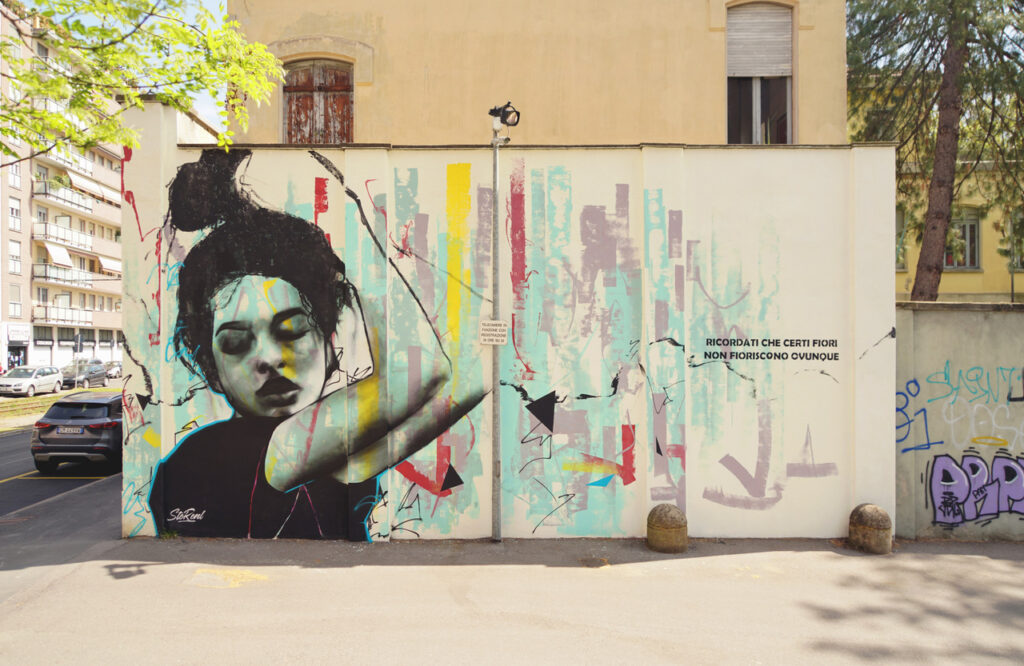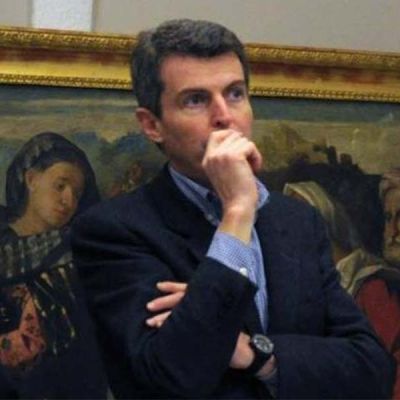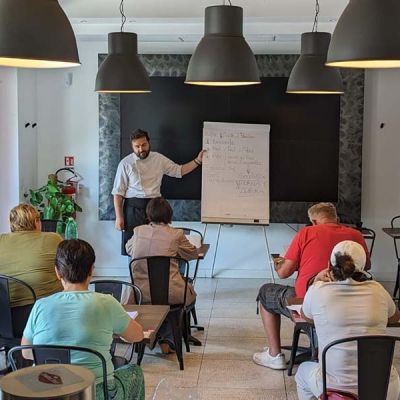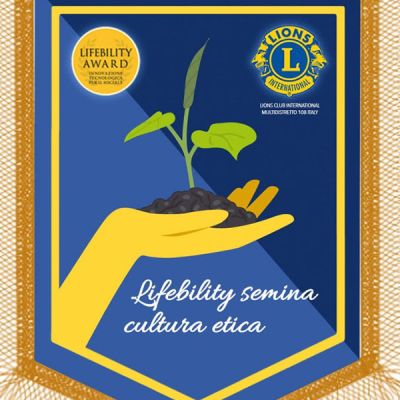Stradedarts has been involved in Urban Regeneration and Redevelopment through Pictorial Muralism and Street Art since 1988. What are the values that
distinguish your reality and that guide your work?
Stradedartswas born spontaneously from our passion, first, for Graffiti Writing and then for Street Art. We are based in Milan’s zone 6, where we took our first steps, breathing new life into abandoned walls and actually giving them back to the community. Our value has always been this, beauty, seen through these cultures and languages, which have been able to transform “non-places” into true open-air museums. We tried to give something back to our territory, to the place where we were born and where we still love to work.
How did your passion for street art originate? How did it turn into a profession?
In 1988, Marco Mantovani aka KayOne, art director of Stradedarts fell in love with this culture through a simple book “Subway Art,” a “bible” in the world of Graffiti Writing. It was enough simply to transfer this passion and energy to the people closest to us, trying to respond to the emerging demand, for the use of this fantastic language, in the professional sphere. Is this not the history of art, great patrons who were able to be enlightened patrons, for great artists? Here we have tried to become the glue between these two worlds.
When we received your proposal to redevelop the wall located at our headquarters on Via Giambellino, thanks to the intervention of artist SteReal, we could only be thrilled.
Urban regeneration is a goal we have in common, in fact ACTL, with the JAM115 project has the dual objective of redeveloping a historic building according to a sustainable approach and, at the same time, establishing a cultural hub in a neighborhood currently under development.
So I wonder, what is the connection between street art and urban redevelopment? Specifically, what made you approach the Giambellino neighborhood?
The wall created by SteReal for Via Giambellino is a perfect example of how Stradedarts moves into our territory. By connecting facilities and companies like yours with artists interested in leaving their work in certain contexts and places, facilitating collaboration and actually bringing about new synergies. The beneficiaries of all this are the citizens and residents who have appreciated, with many testimonies throughout the implementation of the work. City Hall 6 is the area where we have our headquarters and gallery, the place where we live, work and want to grow and stimulate with our interventions…our work has taken us all over Italy, but we always love to come back here.
The mural you made on the wall on Giambellino Street depicts a woman, SteReal’s recurring subject, accompanied by the phrase “Remember that some flowers don’t bloom everywhere.” Would you like to explain what is the meaning of the work and what is the idea that led you to create it?
Stefania Marchetto’s work in art SteReal has always been dedicated to women…dealing with denunciation and making it clearly visible to our eyes, the many women’s issues. So many topics he addressed, always in a sensitive but timely manner. In the case of the Giambellino Street wall, SteReal spoke about a sadly topical issue, violence against women. A face in which all women can recognize themselves, a flower that should be protected and not ripped off as is too often the case now.

Does Stradedarts collaborate with others in the area?
Stradedarts collaborates with all artists who have Graffiti Writing and Street Art at their core, our focus is on these expressions. Our “Street Players” project at the Ippodromo del Galoppo in Milan, involves nearly 500 artists, numbers that were unthinkable when we started, but which today give a good idea of the scope of this culture, which has changed the skin of our cities.
Based on your experience in the field, how does Street Art become a tool for aggregation within an area? Can we imagine the coexistence of initiatives that promote art with moments aimed at strengthening relationships among neighborhood residents?
For a long time now our biggest interventions have been followed by many citizens and several associations that organize real “Street Tours” to see and explain our works. This brings people closer to our culture and actually creates a cohesion between us and them that goes beyond the work itself. This relationship also strengthens the attachment of the citizens themselves to the works, essentially making them the custodians and first users. Emblematic in this sense is our “Corba” intervention at the “Village of Flowers,” between Largo dei Gelsomini and Primaticcio…where in this popular area the residents protect and guard the works as if they had been there forever, precisely because our interventions are perceived this way, a real gesture of attention to the place where they live.
Visit Stradearts website: here.
There is a lack of public initiative, a country that has a large chunk of the world’s artistic heritage cannot reduce management costs, in the long run it is a suicidal choice. Not investing in one of the country’s main resources does not create the opportunity to make these resources more useful and leaves it in an absurd situation in some ways. The costs of heritage preservation are public but all that can be given of the profits is given to private individuals, in this situation of little public intervention a vicious circle is set in motion that leads nowhere.
One of the fundamental things about teaching is the ability to pass on what you have learned; play-force you have to be lucky to have had a great teacher/great
Certainly an initial result was to help more than 2.000 bright young people to present ethical business ideas, several of which have then seen practical implementation, then like any sowing, you have to wait for the harvest; 5 better 10 years have to pass to see if the sowing has been successful, that is, the time it takes for almost 100 of our brilliant winners to establish themselves and become decision makers: in fact, today we can see how winners of the first editions behave ethically when the situation arises, famous example and Cristian Fracassi with a respirator mask during the pandemic, but also others less known.



